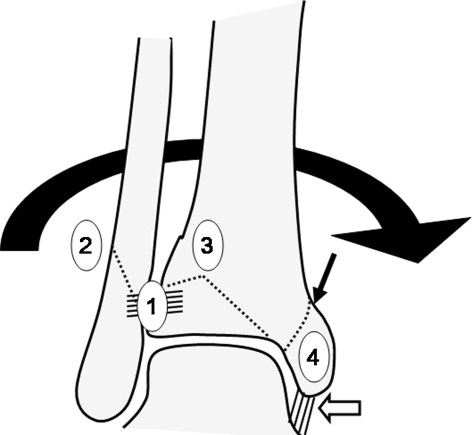Fig. 1.
Initially, the anterior tibiofibular ligament fails (1) (Stage I) and then an oblique fracture of the fibula starting at the level of the ankle and passing posteriorly occurs (2) (Stage II; Lauge-Hansen [22]). This may remain nondisplaced or minimally displaced if the deforming force stops at this point and the mortise remains stable. This is the most common type of fracture, classified as supination-external rotation II (SER-II). Progression of the deforming force (talar rotation) causes posterior and proximal displacement of the fibular fracture. Further talar rotation results in a fracture of the posterior articular lip of the tibia (3) (Stage III), and as the talus leaves the mortise posteriorly, a medial injury occurs (4) (Stage IV) at the deltoid ligament (white arrow) or at the medial malleolus (black arrow).

